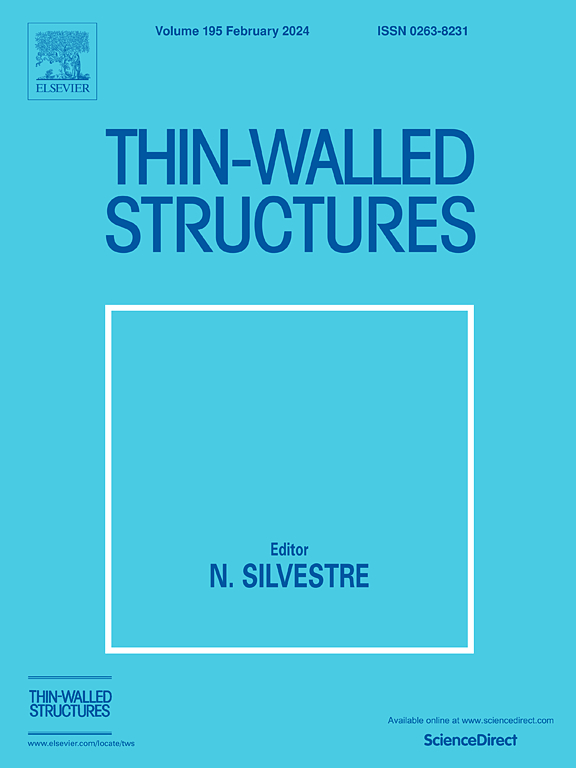Local-global buckling interaction in steel I-beams—A European design proposal for the case of fire
IF 5.7
1区 工程技术
Q1 ENGINEERING, CIVIL
引用次数: 0
Abstract
This paper presents a comprehensive review of the developments leading to the proposal of European fire design rules for steel beams with thin-walled I-sections. Thin-walled beams are favoured in steel construction due to their structural efficiency, however they are prone to buckle when subjected to in-plane loads, phenomenon which requires a thorough investigation. The focus lies on addressing the interaction between local and global buckling in these members. This study discusses modifications to the Effective Width Method at elevated temperatures, aiming to rectify underestimation of section capacity on certain cross-sections. Additionally, an overview of lateral-torsional buckling resistance is provided, being a new Effective Section Factor proposed to account for its interaction with local buckling. The paper revisits the European fire design proposal, comparing the improvements of the existing Eurocode 3 Part 1–2 (EN1993-1-2:2005) relative to the recent second generation of Part 1–2 of Eurocode 3 (FprEN1993-1-2:2023) through an extensive numerical study. Limitations and future research directions are also discussed, such as dependency on the section classification and broadening the application scope of these rules to higher steel grades.
钢工字钢的局部-整体屈曲相互作用--欧洲针对火灾的设计建议
本文全面回顾了欧洲针对薄壁工字钢梁提出防火设计规则的进展情况。薄壁钢梁因其结构效率高而受到钢结构的青睐,但在承受平面荷载时容易发生屈曲,这一现象需要进行深入研究。重点在于解决这些构件的局部和整体屈曲之间的相互作用。本研究讨论了在高温条件下对有效宽度法的修改,旨在纠正对某些截面的截面承载力估计不足的问题。此外,本文还概述了横向扭转屈曲阻力,并提出了新的有效截面系数,以考虑其与局部屈曲的相互作用。本文重新审视了欧洲防火设计建议,通过广泛的数值研究,比较了现有的欧洲规范 3 第 1-2 部分(EN1993-1-2:2005)与最新的第二代欧洲规范 3 第 1-2 部分(FprEN1993-1-2:2023)的改进之处。此外,还讨论了局限性和未来的研究方向,例如对截面分类的依赖性以及将这些规则的应用范围扩大到更高的钢种。
本文章由计算机程序翻译,如有差异,请以英文原文为准。
求助全文
约1分钟内获得全文
求助全文
来源期刊

Thin-Walled Structures
工程技术-工程:土木
CiteScore
9.60
自引率
20.30%
发文量
801
审稿时长
66 days
期刊介绍:
Thin-walled structures comprises an important and growing proportion of engineering construction with areas of application becoming increasingly diverse, ranging from aircraft, bridges, ships and oil rigs to storage vessels, industrial buildings and warehouses.
Many factors, including cost and weight economy, new materials and processes and the growth of powerful methods of analysis have contributed to this growth, and led to the need for a journal which concentrates specifically on structures in which problems arise due to the thinness of the walls. This field includes cold– formed sections, plate and shell structures, reinforced plastics structures and aluminium structures, and is of importance in many branches of engineering.
The primary criterion for consideration of papers in Thin–Walled Structures is that they must be concerned with thin–walled structures or the basic problems inherent in thin–walled structures. Provided this criterion is satisfied no restriction is placed on the type of construction, material or field of application. Papers on theory, experiment, design, etc., are published and it is expected that many papers will contain aspects of all three.
 求助内容:
求助内容: 应助结果提醒方式:
应助结果提醒方式:


